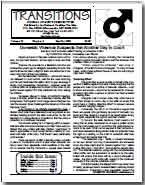
12 January 2012
Over the last three decades, public attitudes to violence between partners have shifted dramatically. No longer is domestic violence viewed as a private family matter.
But despite better and broader understanding, treatment for domestic violence – mainly in the form of protection for battered women and mandated interventions for male batterers – has not met with great success in reducing reoffending.
Why the relative failure of interventions? Because interventions have not taken into account the full spectrum of intimate partner violence (IPV), argue two psychologists from Stony Brook University in New York.
The typical image of domestic violence, in which a man is severely and dangerously violent to a woman, represents an aspect of IPV that is all too real. But the full spectrum of IPV also includes mild and moderate physical aggression that is very common among teens – with around 35% of U.S. high school students reporting that they have perpetrated IPV. This type of IPV also tends to be reciprocal.
This form of early, mutual, less severe IPV calls for a different sort of intervention, argue two psychologists from Stony Brook University in New York. Effective programs start in early adolescence and focus on the actions of both partners, and include other health outcomes, such as healthy relationships, sexual health, and substance abuse.
Moreover, preventing or treating this early IPV may be the key to preventing more severe IPV later on.


